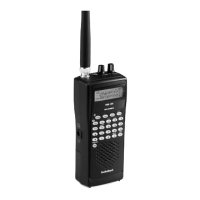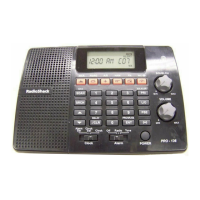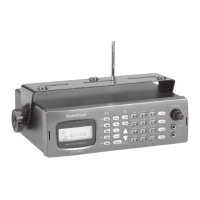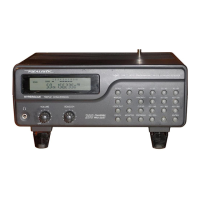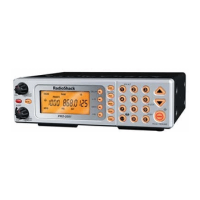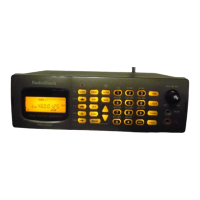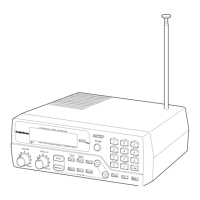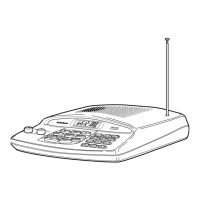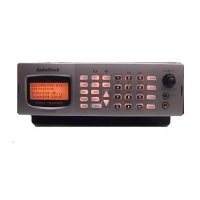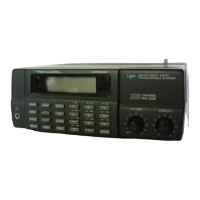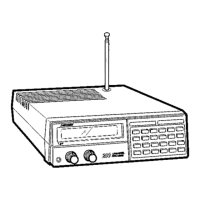Trunking Setup
Instead of transmitting on a specific frequency,
trunking systems choose one of several
frequencies during a 2-way radio transmission
and simultaneously transmit a Talk Group ID
that identifies the 2-way radio user. This allows
trunking systems to allocate fewer frequencies
to multiple 2-way radio users.
Defining a Trunking Bank
You can define any of the 10 banks as a
trunking bank, but each bank can only scan for
one system: Motorola, EDACS (GE/Ericsson),
or LTR (EF Johnson).
Note: Trunking banks can contain both
trunking and non-trunking channels. For
information about saving frequencies
into channels, refer to “Defining a
Channel” on page 18.
To define a Trunking Bank:
1. Press
PROG, then press TRUNK to enter
the ID program mode.
2. Press FUNC, then use S or T to select a
bank.
3. Repeatedly press MODE to select a
trunking mode (Motorola, EDACS, or LTR).
4. Press PROG.
Trunking Modes
In Closed mode, the scanner stops only on
transmissions with saved and unlocked Talk
Group IDs. This lets you focus a scan on the
frequencies you have identified, ignoring
other transmissions.
In Open mode, the scanner stops for
transmissions on any unlocked channel. This
lets you search for Talk Group IDs that you can
then save.
While scanning,
“–”
appears for Closed
mode and
“+”
appears for Open mode under
the channel storage bank’s number. When
the scanner stops on a channel,
”OPEN”
or
“CLOSED”
appears.
To set Open or Closed mode for a bank:
1. Press
MAN.
2. Use S or T to select a bank.
3. Press FUNC then •/DELAY.
“Bank OPEN”
or
“Bank CLOSED”
appears.
Motorola Trunking Setup
Motorola systems can allocate as few as five
frequencies or up to several thousand groups
of users in three categories:
• Type I – User groups are assigned to
fleets. To scan, you must program a fleet
map into the scanner.
• Type II – The Talk Group ID contains 4 or
5 digit numbers.
• Hybrid – Combines Type I and Type II
formats.
Note: For information about saving
frequencies into channels, refer to
“Defining a Channel” on page 18.

